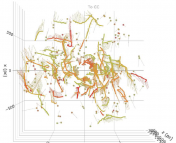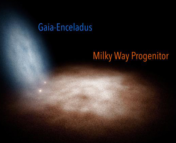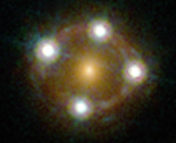Title: A search for the origin of the interstellar comet 2I/Borisov
Authors: Coryn A.L. Bailer-Jones, Davide Farnocchia, Quanzhi Ye, Karen J. Meech, and Marco Micheli
First Author’s Institution: Max Planck Institute for Astronomy, Heidelberg, Germany
Status: Submitted to Astronomy & Astrophysics [closed access], preprint on arxiv
To our knowledge, 2I/Borisov is the second interstellar object to pass through our solar system (its discovery is highlighted in this Astrobite). Unlike the first visitor, 1I/‘Oumuamua, 2I/Borisov is very distinctly a comet. It was discovered by amateur astronomer Gennady Borisov (who had discovered seven comets prior to this one) at the end of August 2019.
The tell-tale of a passing interstellar object is its extreme orbit — it will likely never swing by the Sun again. The nature of 2I/Borisov became evident within a few weeks following its discovery, and astronomers were able to pick it out in older observations going all the way back to December 2018.

In the paper discussed in this Astrobite, astronomers try to determine which star system 2I/Borisov was ejected from, using archival observations and the second release of Gaia data (Gaia DR2) to retrace its journey.
Tracing Through Time
To begin, the authors attempt to model the comet’s pre-solar system trajectory. Aside from gravitational interactions, the orbit of 2I/Borisov can be changed by cometary activity (for example, unstable compounds on the comet’s surface reacting or trapped gas escaping from within the comet). This activity is significant enough to distinguish models that include it from models that do not.
For a selection of models, the authors estimate what 2I/Borisov’s incoming trajectory would have been from 3000 BCE to the present. From the resulting solutions, they choose solution 47 (see Figure 2) since it’s the most representative of the entire range of solutions. Solution 47 comes from a model that assumes 2I/Borisov’s orbit is being impacted by cometary activity related to carbon monoxide (more details in this paper here).

Armed with solution 47, the authors determine the paths of ~7,400,000 nearby stars from Gaia DR2 and the path of 2I/Borisov over the past few million years. They find that 2I/Borisov came within ~1 parsec of 14 stars, but proximity alone does not indicate origin. Another key parameter to consider is how fast 2I/Borisov was moving when it was ejected. Whichever system 2I/Borisov interacted with, it would have to have left with a speed on the order of km/s or tens of km/s — very slow by astronomical standards!
Close Encounters of Many Kinds
The closest encounter 2I/Borisov had in the author’s models was with Ross 573, coming within 0.068 parsecs or ~14,000 astronomical units of the star (very close, really!). The encounter happened nearly a million years ago and imparted 2I/Borisov with a sufficiently slow speed. But how Ross 573 could have done that is unclear, especially since it is not in a more optimal binary star system.
The second closest encounter happened with GJ 4384, which could be in a binary with Gaia DR2 2875096978193654528 (AKA HD 224636) assuming that GJ 4384 is the same as HD 224635. However, this encounter with 2I/Borisov occurred at too large a distance for this system to be a good candidate. Encounters with other stellar systems could give 2I/Borisov the ideal slow ejection speed but when other parameters are considered they seem implausible.
The authors are careful not to claim Ross 573 as the definite originator of 2I/Borisov though the close encounter makes it a good candidate. Chance encounters can happen between astronomical objects but the odds are — astronomical. Only considering stars observed by Gaia, an encounter like the one between Ross 573 and 2I/Borisov would happen only every 120 million years or so! Even a more modest estimate puts the rate of encounters at one every ~11 million years.

Ejecting a comet seems to require a particular sort of system. But with instruments like Gaia, we stand a better chance of finding those systems. And given the frequency with which interstellar travelers seem to be appearing in our solar system, we’ll likely be going down this road again soon!





I don’t know much about Ross 573 but if it has a large gas giant planet could that have played the necessary role in kicking out 2I/Borisov? I know I’ve heard about the role Jupiter had/has in ejecting comets from our own solar system.
That’s a great question! The paper does consider the possibility of a planet being responsible (or partly responsible) for kicking out 2I/Borisov, but it appears that the calculated velocities are too high for a planet to be involved.